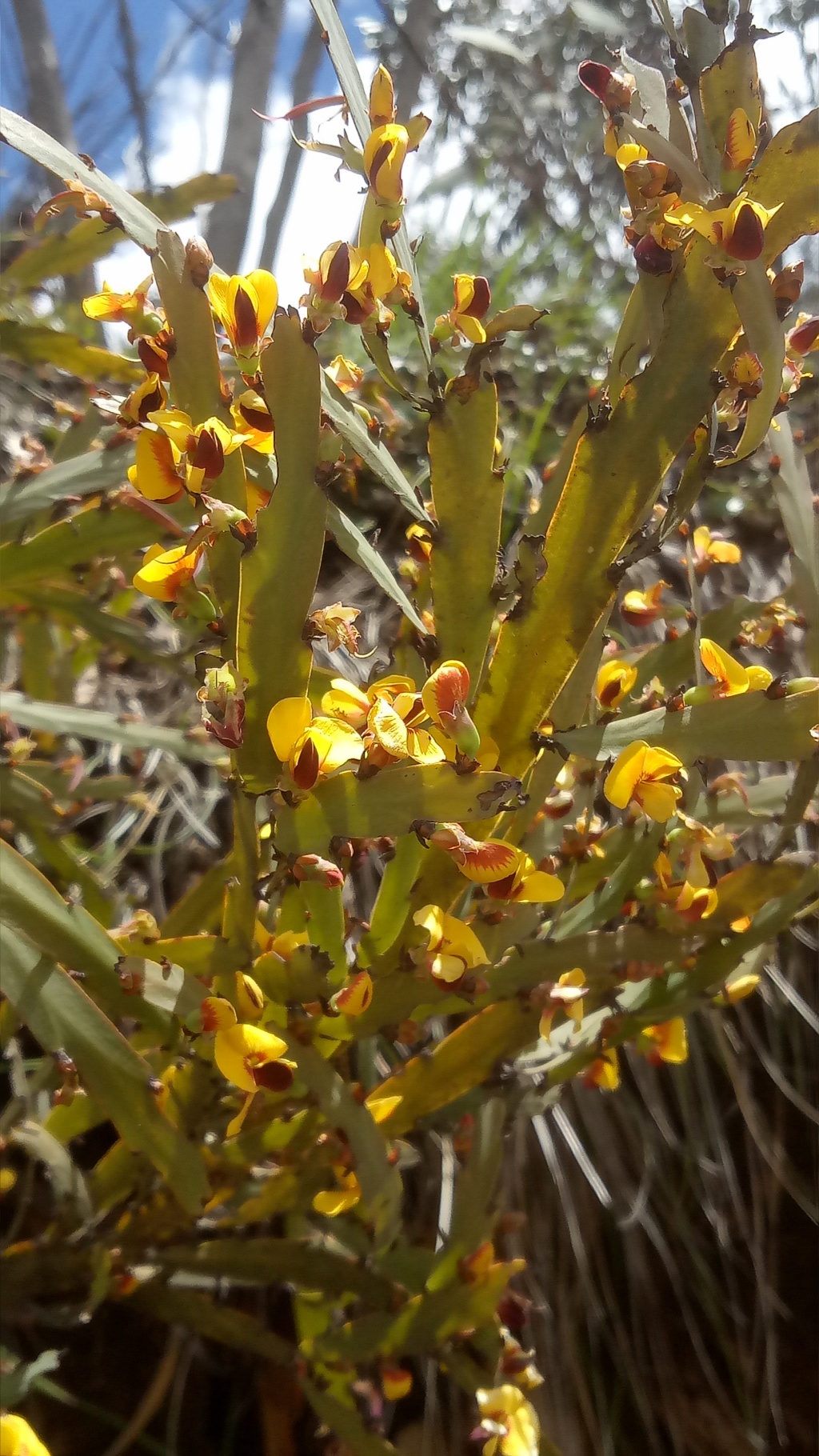Bossiaea bracteosa
F.Muell. ex Benth. Mountain Leafless BossiaeaRigid, dense, often extensively root-suckering shrubs to 2 m high, ±glabrous; main stems terete, branches flattened and winged, ultimate branches of cladodes 5–14 mm wide, with a relatively deep recession at nodes, often with a white waxy surface that exfoliates when the branches dry. Leaves reduced to scales 3–5 mm long, 1–2.5 mm wide from midrib to margin, venation conspicuous. Flowers usually solitary, 8–10 mm long; pedicels 1–3 mm long; bracts several, conspicuous, reddish-brown, distichous, c. 2 mm long, persistent; bracteoles obscure, soon deciduous; calyx 4–5 mm long, glabrous; standard deep yellow, often suffused with red externally, longer than other petals; ovary shortly stipitate, glabrous, 6–8-ovuled. Pods oblong, 2.5–4.5 cm long; stipe c. equal to calyx. Flowers Nov.–Dec.
NIS, EGU, HSF, HNF, MonT, VAlp.
Distinguished from most of the other leafless species by having conspicuous large deciduous scarious scales at the nodes, cladodes with relatively broad ultimate branches, flowering pedicels shorter than or scarcely exceeding bracts, and soon-deciduous bracteoles. Many of these characters are also shared with B. vombata. That species consists of two subspecies, both of which have restricted distributions, and are known in Victoria from very few plants. See notes under B. vombata.
Ross, J.H. (1996). Bossiaea. In: Walsh, N.G.; Entwisle, T.J., Flora of Victoria Vol. 3, Dicotyledons Winteraceae to Myrtaceae, pp. 808–815. Inkata Press, Melbourne.
 Spinning
Spinning
